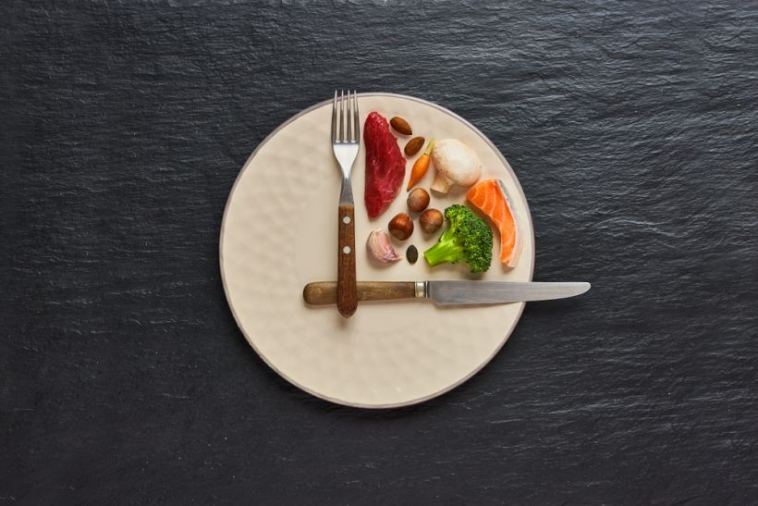- Like
- SHARE
- Digg
- Del
- Tumblr
- VKontakte
- Flattr
- Buffer
- Love This
- Save
- Odnoklassniki
- Meneame
- Blogger
- Amazon
- Yahoo Mail
- Gmail
- AOL
- Newsvine
- HackerNews
- Evernote
- MySpace
- Mail.ru
- Viadeo
- Line
- Comments
- Yummly
- SMS
- Viber
- Telegram
- JOIN
- Skype
- Facebook Messenger
- Kakao
- LiveJournal
- Yammer
- Edgar
- Fintel
- Mix
- Instapaper
- Copy Link
Introduction
Fasting. Whether you do it for dietary reasons or religious reasons, fasting has become ingrained in society to the point that we’ve all either done it or know someone who does.
If you fast for dietary reasons, odds are it won’t be for more than a few days and you will still freely drink throughout the day – even during your permitted fasting times. Dietary fasts tend to allow you to eat for a period of around eight hours during the day, meaning your day-to-day life and fitness regime won’t typically change.
Fasting for religious reasons such as Ramadan is more intense and lasts for a full month. No drinks can be consumed during daylight hours, and that means day-to-day tasks are a bit harder and working out is likely to take a back seat.
What Happens to Your Body When You Fast?
The body undergoes many changes when you fast, namely the fact that the liver is forced to transform fat into sugar. This increases your metabolic rate and helps you burn fat quicker, resulting in potential weight loss.
Whilst you might lose weight, you may also lose muscle mass. It shouldn’t be too much to notice, but it’s something you should keep in mind when you enter a fasting period.
It’s harder for your body to build muscle mass when you’re fasting, but once you begin to eat, your body should recover. If you’re fasting for Ramadan, when you end your fast with Eid al-Fitr and Eid al-Adha feasts, your body will be able to restore all its natural reserves and you can begin to regain any muscle mass or strength you might have lost.
Four Tips to Help You Keep Fit While You Fast
Whatever reason you’re fasting for, you can still work out and keep fit safely, and here’s how:
Change Your Workout
Many workout routines have a decent portion of cardio in them, but if you’re fasting, it’s advisable to reduce the amount of cardio you undertake. Focus on strength training instead as this will be less intense and your body will be able to cope with it far better than if you were to do a high intensity, long distance run.
In order to get your heart rate up, you can go on a brisk walk during the day. This is especially recommended if you are relatively new to fitness. Fasting is not the time to introduce a new fitness regime. Your body won’t be used to it and will struggle to adapt, so save any drastic fitness changes for when you finish fasting.
Timing is Key
Everyone’s bodies react differently to fasting, so it’s all about figuring out what time your body is best suited to exercise. For some people, this is on an empty stomach followed by a meal immediately after, but for others, they perform and feel better after they’ve eaten. Either way, it’s advised that if you’re going to be undertaking anything more strenuous than a brisk walk, do it either right before or right after you eat.
Try to avoid doing a high intensity strength workout in the middle of a hot day knowing you can’t eat or drink anything afterwards.
Nutrition, Nutrition, Nutrition
When you’re fasting your body doesn’t have access to the sugar it’s used to. This can create sugar cravings, so when your fast is coming to an end, it’s highly likely you’ll want to head straight for the sugary and fatty foods to satisfy your cravings. Don’t give in. It’s essential that you maintain a healthy diet to avoid bloating whilst giving your body all the nutrients it needs to keep functioning.
Try and target every food group and eat dishes rich in vegetables, fruit and protein. This is especially important when it comes to the last meal you have before you fast. If you’re on an intermittent fasting diet, your last meal will likely be in the evening, so make sure it’s filling and nutritious to give you enough energy to see you through the next eight/ten or even 16 hours until you next eat.
If you fast for religious reasons, your last meal will be before sunrise which gives you a good chance to stock up for the day ahead. Whatever your reason for fasting, make sure you eat enough to sustain you, and drink copious amounts of water to stay hydrated.
If you don’t eat or drink enough, you’ll feel sluggish and fatigued as your body struggles, and this doesn’t bode well for maintaining a fitness routine.
Go Easy on Yourself
Fasting is difficult and is a real test of determination, perseverance and self-control. Don’t expect to be able to maintain the same levels of fitness and the same intensity workouts whilst doing it. It’s okay to work out less and to engage in slower and softer workouts. Don’t beat yourself up about it, be kind to yourself and your body will be kind to you.
The Bottom Line
So, it is possible to workout and stay fit whilst fasting if you follow the golden rules above. Remember to go easy, keep moving and find a balance that works for your body and you’ll be fighting fit whilst reaping the rewards of fasting!


